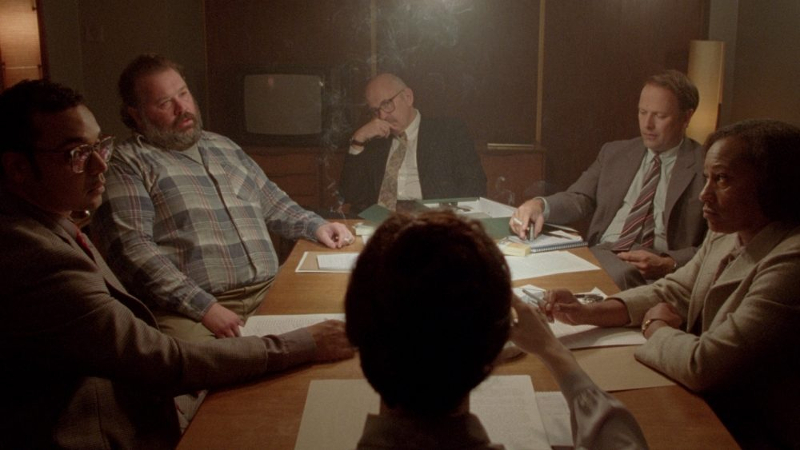Director – Prano Bailey-Bond – 2021 – UK – Cert. 15 – 84m
****
In the 1980s so-called ‘video nasties’ era, a BBFC examiner increasingly confuses horror films with reality – on MUBI from Sunday, October 31st
A peculiarly British film in that it pertains to the way so-called ‘video nasties’ were dealt with by the UK censor in the 1980s. With the rise of video technology, a legal loophole meant that while cinema films were given a certificate by the UK censor, films released straight to video were not. A number of horror films far more violent and bloody than the censor would allow for cinema exhibition thus found their way onto VHS videotape, into video stores and onto the nation’s home TV screens via the video player.
Sections of the UK press ran stories of ‘video nasties’ suggesting that seeing such videos would corrupt children and impressionable members of society. One or two Tory MPs campaigned for changes to the law, resulting in the 1984 Video Recordings Act. Now videos came under the BBFC’s remit (it changed its name from the British Board Of Film Censors to the British Board Of Film Classification) and video titles were examined then passed, passed with cuts or banned.
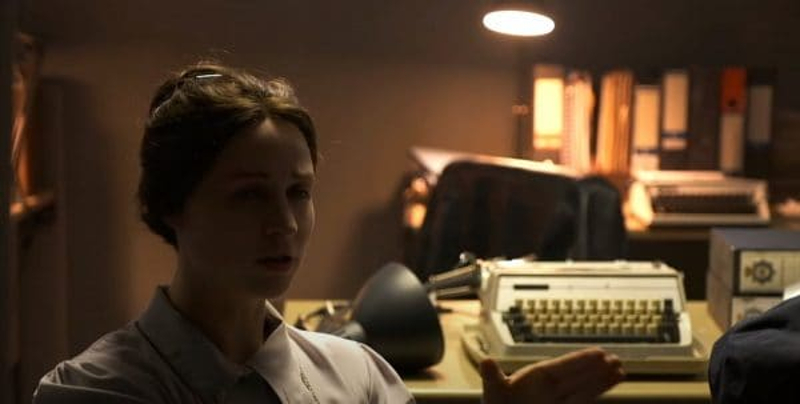
All this informs Censor‘s opening title sequence which references such high profile ‘video nasties’ as The Driller Killer (Abel Ferrara, 1979) and I Spit On Your Grave (Meir Zarchi, 1978) along with pro-censorship campaigner Mary Whitehouse, boxes of titles including The Evil Dead (Sam Raimi, 1981) seized by Trading Standards and, on the soundtrack, moral panic sound bites from the UK media.
Which brings us to the film proper. The plot involves BBFC examiner Enid (Niamh Algar from Calm With Horses, Nick Rowland, 2019), first seen pouring over her notes on a film she’s discussing with a colleague. “The eye-gouging must go,” she says. “It’s like Rat Brothel all over again,” responds the jaded Sanderson (Nicholas Burns). Censor is nothing if not possessed of a dark sense of humour.
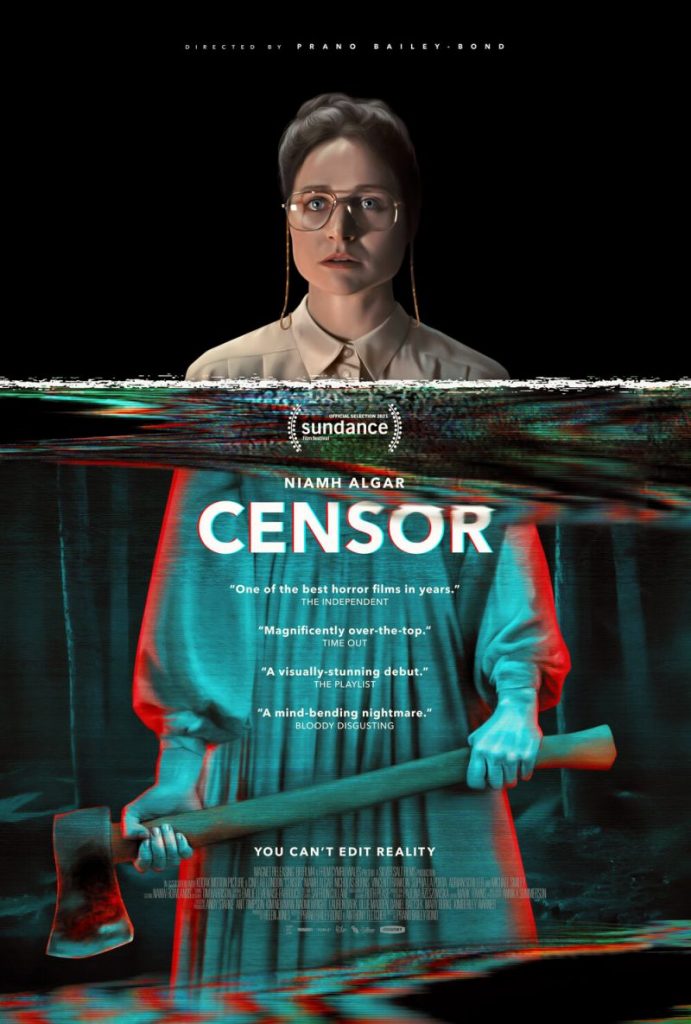
Enid’s work days consist of viewing films and deciding what scenes need to be pruned or cut. Some months ago, she was one of the examiners who passed the film Deranged which contains a scene (which we never see) or a man eating a woman’s face. Unfortunately for the Board and Enid, a man arrested by police and dubbed the Amnesiac Killer by the UK press killed his wife then ate her face, and a journalist is linking the killings to Deranged with Enid named as the censor who passed it.
(How would they know it was her? No explanation is offered. But we’ll let that pass.)
At home, Enid receives anonymous phone calls telling her she should be ashamed of herself for allowing such material to be seen. Unsettling sequences occur as she walks through a brutalist underpass as if something terrible were about to happen. She is hounded by journalists when she arrives at work.
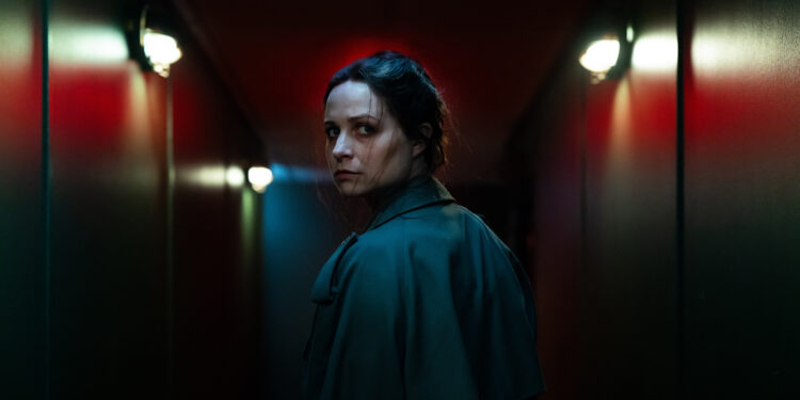
While all this is going on, it transpires that she is obsessed with the disappearance when she was a child of her young sister Nina. Her parents George and June (Andrew Havill and Clare Holman) consider Nina dead, but Enid can’t let it go. After meeting visiting producer Doug Smart (Michael Smiley from Kill List, Ben Wheatley, 2011) at the office, she becomes obsessed by his star director Frederick North whose films include the upcoming Don’t Go In The Church and the banned Asunder. The former she has to view for classification and its images seem to her to be all about her vanished sister; the latter she rents illicitly from Gerald (Richard Glover) of local shop Gerald’s Videos generating a press story with the headline CENSOR’S DEPRAVED VIDEO NASTY HABIT.
As she starts to investigate director North (Adrian Schiller) accessing his current film shoot via producer Smart, dead bodies start to appear in her wake. Her grasp on what is real and what is a film shoot becomes increasingly blurred, particularly with regard to violence. In an unexpected coda to the bloody denouement, she escapes the film shoot with her long lost sister, to live in a perpetually sunny England where video nasties are no more and crime has miraculously been reduced to zero. Or has it? The sunny world video glitches into moments of somewhere much darker, where a different version of Enid sports an evil smile…

This ending highlights something about the rest of the film. The art direction is either dull and gloomy or, as Enid’s grip on reality slackens, increasingly resembles the tackier side of a certain style of horror film production, where landscapes such as woodlands are enhanced with swathes of unnatural, lurid-coloured, monochrome light.
The whole thing is a fantasy inspired by the spurious press arguments of the day which didn’t really make sense then and still don’t now, the difference now being that such things can be viewed in historical context with the benefit of hindsight. The running commentary of events by British TV and newspapers throughout seems ludicrous, but then, back in the day, such pronouncements were just as questionable even as they gathered media momentum.
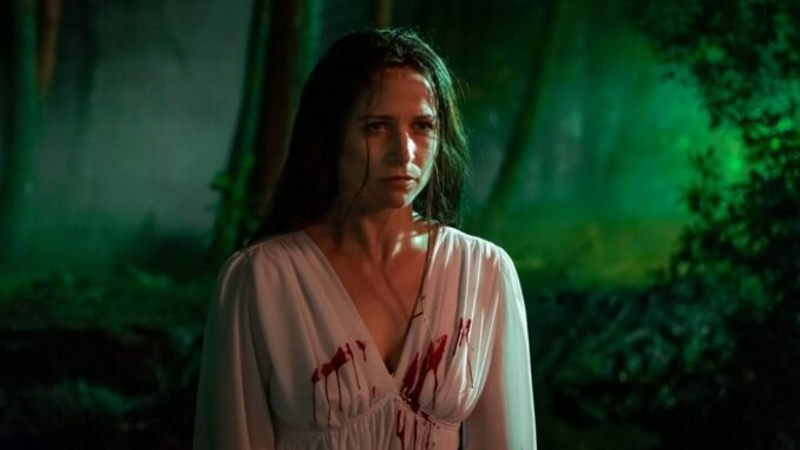
Bailey-Bond has a lot of fun with all this, planting all manner of tropes and elements for an appreciative audience to discover. The cast are a joy, with leading lady Algar doing a terrific job as the only cast member on screen for any appreciable length of time as characters come and go in the narrative in the office, in her life outside and eventually in the film business and on a film set. It’s a tough call to single out any one other cast member, but I particularly enjoyed Erin Shanagher’s makeup artist Debbie who matter-of-factly takes charge of Enid when she shows up on North’s set in the final reel.
It’s a real pleasure to watch the film shift so seemingly effortlessly between its several planes of existence. And my inner animation nerd was particularly pleased to see the old BFI logo (The Quay Brothers, 1991) resurrected at the start, even if that is technically from a later decade.
Censor is out on MUBI from Sunday, October 31st.
Trailer:
2021
MUBI from Sunday, October 31st
BFI Player Rental from Monday, September 20th.
UK cinemas from Friday, August 20th.
